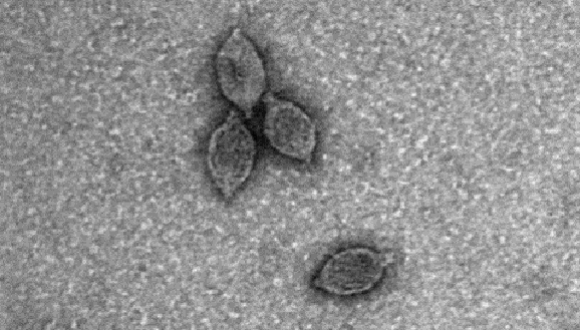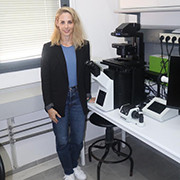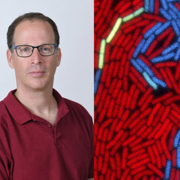Unveiling the Viral Secrets of the Third Domain of Life
Exploring the Unique Roles of Viruses in Archaea: Insights from Prof. Uri Gophna's Research
Viruses are usually thought of in the context of disease - when a virus infects an organism and multiplies inside its cells until the organism defeats it or dies. However, advances in molecular biology in recent decades have revealed much more diverse and multifaceted roles and interactions between viruses and different organisms. Prof. Uri Gophna from Tel Aviv University's Shmunis School for Biomedicine and Cancer Research is working to unveil this viral diversity in nature's third and most mysterious domain: Archaea.
Archaea are unicellular organisms that, like bacteria, don’t have a nucleus holding their genome. Still, most of their molecular mechanisms are closer to the ones found in the cells in our bodies and the bodies of the rest of the multicellular organisms, and also many unicellular organisms, all collectively called eukaryotes. It is now assumed that all eukaryotic cells evolved from a certain group of archaea. The study of the archaea has advanced significantly in recent years, as has the study of viruses infecting them.
Lemon-shaped Viruses
"These viruses are all unique to the archaea and are different from what we know from bacterial and also eukaryotic viruses, both genetically and in their forms. They come in multiple shapes we have never seen in viruses of other organisms, such as lemon-shaped or bottle-shaped viruses, and many other surprising forms."
Another surprise is that most of these viruses are not lethal. "In eukaryotes and bacteria, most viruses we know and study can either multiply inside a cell until they kill it or stay dormant and hide in the cell until something happens and the virus starts multiplying and then kills the cell," adds Gophna. However, most archaeal viruses function differently: they chronically infect the cells. "They remain active, and constantly multiply at a rate that means the cell is slightly ill. It releases viruses all the time but stays alive."
With classic viral infection, evolutionary logic means it is often better for the cell to kill itself before the virus has the time to multiply and spread to sister cells with the same genetic material as the one infected. However, this logic is not relevant for chronic viral infection. "You won’t jump from the rooftop because of a common cold, even if it means you’ll infect 20 brothers and sisters," explains Gophna.

Prof. Uri Gophna, Shmunis School for Biomedicine and Cancer Research, Tel Aviv University
Archaea's Defense Mechanisms
Gophna’s latest research made significant advances in understanding this type of infection. Previous studies in archaea found that these organisms still maintain "suicide mechanisms" similar to those found in cells of bacteria and eukaryotes, even though they have no clear incentive to use them against chronic viruses. "Our latest research is beginning to understand why. The system we are studying works by depleting the cell of a molecule crucial for its function and thus causing its death. When we first infected the archaeal cells carrying this system with the virus, we expected the colony to wither and die. Yet instead, we observed after a while, colonies that managed to clear the virus," says Gophna.
It turns out that when encountering a chronic virus, this archaeal system is capable of disrupting the function of the virus directly without killing the cell. "We are still deciphering the details but it seems like a protein produced by this system disrupts the ability of the virus to produce the envelope it needs to continue infecting cells, and also, when the cell divides, prevents the virus from infecting the daughter cells."
Implications for Broader Understanding
Archaea in general, and archaeal viruses specifically, are much less studied than bacteria and eukaryotes, and this field of study promises many discoveries. In addition, understanding these suicide cellular defense systems is interesting because they are very ancient and can be found throughout nature, all the way to plants and even animals. Gophna’s discovery also highlights the fact that those systems are usually studied under particular conditions, and studying their function against chronic viruses demonstrates they have more nuanced and diverse roles beyond their suicidal function.
"It should also be remembered that certain areas in our bodies, such as our skin, are also crowded with many viruses that, since they cause no illness, are hardly studied and nobody knows what they do," mentions Gophna. "Understanding the interactions between chronic viruses, cellular defense systems, and organisms might also be relevant to better understanding human biology."





